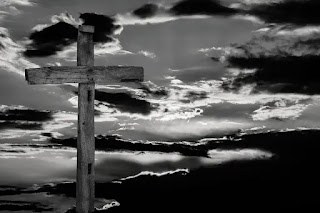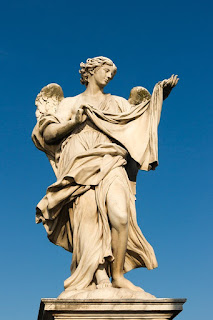The Veil of Veronica - True Image of Jesus
What is the Veil of Veronica
The Veil of Veronica was first mentioned in the 4th of 5th century and has since become most associated with the Stations of the Cross. The Veil is believed by some to hold the image of Jesus' face, obtained while Jesus was being taken to the cross. The remarkable story, if true, would make Veronica's Veil one of, if not, the most valuable and sensational relics of all time. As with any relic or artifact of this kind, it is shrouded in mystery and has no shortage of critics.
A nearly two thousand year old artifact prompts many questions. Is the Veil real? Where did it come from? Why and when did it become associated with the Stations of the Cross? Who is Veronica, and why was she chosen to receive the Veil? Does the Veil still exist, and if so, where is it today?
Via Dolorosa
The story of Veronica's Veil starts near the end of Jesus' earthly ministry. On Good Friday Jesus was condemned to death and eventually lead to Calvary where He was crucified. As a condemned prisoner Jesus was paraded through the streets of Jerusalem in full view of the people, some of whom ridiculed Him, others were His followers. The passage through Jerusalem to Calvary is traditionally known as the Via Dolorosa. Visitors to Jerusalem today can follow the traditionally pathway Jesus took through the old city.During the middle ages a new tradition began which was done in remembrance of the path Jesus walked. This procession not only remembered the route Jesus walked, but also the events of the entire day. These became known as the Stations of the Cross. The original tradition had only seven stations. Around 1731 these were expanded to fourteen which are still celebrated in many Christian churches today.
Stations of the Cross
- Jesus is condemned to death.
- Jesus takes up His cross.
- Jesus falls for the first time.
- Jesus meets His mother.
- Simon of Cyrene helps carry cross.
- Veronica wipes the face of Jesus
- Jesus falls for the second time
- Jesus meets the women of Jerusalem
- Jesus falls for the third time.
- Jesus is stripped of His garments.
- Jesus is nailed to the cross.
- Jesus dies on the cross.
- Jesus is taken down from the cross.
- Jesus is laid in the tomb.
Who was Veronica?
A quick search of the Bible does not find anyone named Veronica. While no Biblical reference exist, we do have early church tradition. We in fact do not need to look for a person named Veronica, since that was not the woman's name. The name, or term, Veronica comes from Vera Icon which means "True Image", sometimes called the Sudario.
[Sudario - means a canvas or other cloth which was used to cover the face of a dead person.]
Early church tradition tells us the woman associated with the veil is the same woman Jesus healed of a prolonged bleeding problem. This miracle is recorded in the Gospel of Matthew. In the Eastern church the woman who would become Veronica is known as Berenike. In the western church she is given the name of Martha of Bethany.
'And behold, a woman who had been suffering from a hemorrhage for twelve years came up behind Him, and touched the border of His cloak; 21 for she was saying to herself, “If I only touch His cloak, I will get well.” 22 But Jesus, turning and seeing her, said, “Daughter, take courage; your faith has made you well.” And at once the woman was made well.' - Matthew 9:20-22
It would seem the woman who has become known as Veronica, may have had a history with Jesus. He had healed her of a long term physical ailment and it is reasonable she became a follower. Being a follower and in His debt, Veronica may have wanted to repay at least a portion of her debt. Veronica could not save Jesus from the cross, and she could not relieve His pain, but she did what she could to comfort Him and take away a very small part of the ridicule He was experiencing.
Veronica is mentioned in the Apocryphal book known as "The Acts of Pilate" which was written sometime in the 4th or 5th century. The story of Veronica however, did not become well known until much latter. In approximately 1844 a Carmelite nun reported having a series of visions of Jesus and Mary. In these visions the nun, Sister Marie of St. Peter, claimed to have seen Saint Veronica wiping away the spit and mud from Jesus' face. Sister Marie reported that Jesus spoke to her in the visions and told her, "Those who will contemplate the wounds on My face here on earth, shall contemplate it radiant in heaven." While these reported visions helped bring the Veil of Veronica much more attention, the legend of Veronica's actions had been well known for several centuries prior to the visions.
The veil, and the image it held, were revered and many artist copied the image in their paintings. Eventually, in the year 1629, Pope Urban VIII prohibited any new copies to be made and he even ordered all known copies to be destroyed. The Veil of Veronica would eventually be taken out of the public eye and misplaced. It is reported that in the 17th century the Veil of Veronica was discovered in a hidden relic chamber which had been built by Bernini in one of the piers supporting the dome of St, Peters.
Some scholars believe the Veil is not an authentic but is instead a copy of the image on the Shroud of Turin. They believe this could be the reason for the term "True Image" associated with the Veil. Interestingly, if this is in fact true, it pushes the date for the Shroud of Turin back to at least the 4th or 5th century when the first recorded mention of the Veil is recorded. This would be in direct contrast to tests which say the Shroud could not have been made before the middle ages. (Note: New tests show the Shroud may indeed be a 1st century artifact.)
Mandylion of Edessa
Some people associate the Veil of Veronica with another similar relic known as the Mandylion of Edessa. Both of these relics are acheiropoietons and both hold what many believe is an image of Jesus. While similar, these two artifacts have very different stories.
[Acheiropoieton - a religious relic or icon which was not crafted by the hands of man. These icons are considered miracles and are beyond the realm of science. In most cases these involve images of either Jesus or His mother Mary. Perhaps the best known acheiropoieton is the Shroud of Turin.]
The Mandylion of Edessa was considered the most important relic in Constantinople. It was reportedly brought to Constantinople on August 15th in the year 944 by Emperor Romanos I. Legend tells of a Prince who wished to meet Jesus but was unable to travel to Jesus. The Prince sent a servant to request Jesus to come to the Prince. Jesus declined, but wiped His face on a cloth which He gave to the servant to take back to the Prince. When the Prince received the cloth he found it held the image of Jesus' face.
A second legend is also associated with the Mandylion of Edessa. Rather than Jesus being visited on the road by a servant of the Prince, it is reported that Jesus wiped his face while in the Garden of Gethsemane. After His agony in the garden, Jesus wiped his face and it resulted in the image of His face being transferred to the cloth. Regardless of which legend is considered, they are both referencing a completely different event and relic than the Veil of Veronica.
Where is Veronica's Veil?
As mentioned earlier, Veronica's Veil was misplaced for a period of time. When and where it was found, if it was found, is disputed by many. While there are many stories and theories concerning the current location of the Veil, four locations are most closely associated with the Veil, but a number of these are known to be copies.
1) Matilda Chapel in the Vatican - Kept in a small chapel in St. Peter's Basilica, the Vatican claims to have the original Veil of Veronica. The Veil is not accessible to the public but it is displayed, so to speak, once a year. On the fifth Sunday of Lent the Veil, still in its frame, is brought out onto the balcony above the statue of Saint Veronica. From the floor below it is impossible for the onlookers to make out any details.
In 1907 an art historian was allowed to view the Veil of Veronica up close. The Veil was even removed from its heavy metal frame for a better viewing. He later reported he could not make out an actual face. Instead, there were two faint rust-brown stains that were connected. The material itself was much lighter in color and reportedly faded by age. It the historian's report is accurate, even if this is the authentic Veil of Veronica, it would seem there is not much to see.
2) Hofburg Palace in Vienna - This Veil is not the original, nor does it claim to be. It is a copy of the original painted by P. Strozzi. He was hired by the Vatican to make six copies of the Veil in 1617. While this is certainly not the original it does offer hope the original is still in existence. Rome was sacked in 1527, so if this copy was made in 1617 it would indicate the original Veil survived the sacking of Rome.
3) Jaen Cathedral in Spain - The Veil of Veronica housed in this Cathedral is another copy. It was acquired by Bishop Nicholas de Biedma for the Cathedral in the 14th century. The copy is displayed on Good Friday and the Feast of the Assumption. Known as the Santo Rostro, the copy is also displayed in a chapel beside the cathedral every Friday for 90 minutes.
4) Monastery of the Holy Face in Alicante Spain - This Veil, known as the Holy Face of Alicante was acquired by Pope Nicholas V in 1353 and then given to a Spanish priest who took it to Alicante. Upon its arrival in Alicante the relic was credited with ending a long drought. There are some who believe this Veil is the original which was originally in the Vatican before being gifted to the monastery. Proponents of this being the original Veil make a very strong and persuasive case, but others find it unlikely the Vatican would have ever given away such an iconic artifact.
There are other claims to the Veil but all are lacking credibility. It seems most likely that if the Veil of Veronica still exists, or if it ever existed, it is the cloth which is housed in the Vatican. While there is certainly a possibility the Veil could be real, there is no mention of it, or even the encounter between Jesus and the woman, in the Bible. While tradition has it place and can help put things into proper context, it would seem such an important event, had it taken place, would have been recorded in one or more of the gospel accounts.
Did you enjoy this article? Follow this Blog to get new posts sent directly to you.


Comments